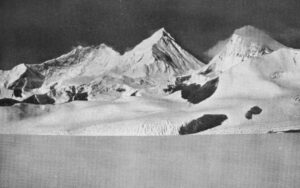Rescuers have given up all hope of finding alive the three Sherpas buried under the serac debris on Everest. It’s impossible to dig or move the tons of ice that fell on them yesterday.
“The ice [blocks] are as big as houses,” Norbu Sherpa of the Himalayan Rescue Association told The Kathmandu Post from Base Camp.
The deceased climbers were Da Chhiree Sherpa, Lakpa Tendi Sherpa, and Lakpa Rita Sherpa. They were part of a 25-person team from Imagine Nepal, assigned to fix the ropes between Camp 2 at 6,400m and the 8,849m summit of Everest.
The tragedy occurred yesterday at 9:30 am, as the climbers were crossing the so-called Football Field at 5,700m, Norbu Sherpa said. That section, right in the middle of the Icefall, is the one most exposed to falling seracs.
Every year, depending on conditions, the Icefall Doctors from the Sagarmatha Pollution Control Committee (SPCC) open the route to Camp 2. In recent years, they follow a different line that tries to stay further away from the West Shoulder, which is vulnerable to avalanches from collapsing seracs.
Serac fall or Icefall collapse?
One day later, details on exactly what happened remain sketchy. A video posted yesterday by Lakpa T. Sherpa gave the impression that a piece of serac had fallen from the West Shoulder, triggering an ice avalanche that swept through the Icefall. It is unclear, however, if this caused the tragedy or even if the video was filmed yesterday. As yet, Imagine Nepal has published no official report.

A frame of the video posted yesterday by Lakpa T. Sherpa shows an avalanche starting right under seracs hanging from the flank of the West Shoulder.
Garret Madison, leader of Madison Mountaineering, suggested from Base Camp that the tragedy had a different cause.
“The accident was a collapse in the Khumbu Icefall, not an avalanche from the West Shoulder,” Madison told ExplorersWeb. “A hollow section of the glacier gave way and the ice around collapsed, according to our Sherpa team who were there at that time.”
In any case, the event carries bitter memories of 2014, when a serac fell from the West Shoulder and killed 16 Sherpas. An apparently unstable serac also thwarted two expeditions in the fall of 2019.
After yesterday’s accident, the question is, what is going to happen next?
Will the route be (somewhat) safe again?
While the Sherpa community mourns its dead, a perhaps record number of climbers — certainly, in the hundreds — roam the Khumbu Valley. They are currently acclimatizing on lower peaks or trekking toward Base Camp. They expect to find everything ready at least until Camp 2, in order to start acclimatizing up the mountain. But the avalanche may delay that.
The severely damaged route across the Icefall will have to be redone. Then, before venturing again, experts will have to check the area carefully. It may still be unstable and too dangerous to approach.
“It is difficult to know whether it’s an isolated incident or the start of a period of instability,” UK guide Tim Mosedale told ExplorersWeb.

Icefall Doctors at work in the Khumbu Icefall some weeks ago. Photo: SPCC
If a serac fall caused the incident, it might have released all the weak sections at once. Or on the contrary, it may have destabilized the entire area around it, Mosedale pointed out.
So far, there is no word of any excessive delay. “The rope fixing and climbing will resume once teams re-evaluate the route,” Garret Madison said.






